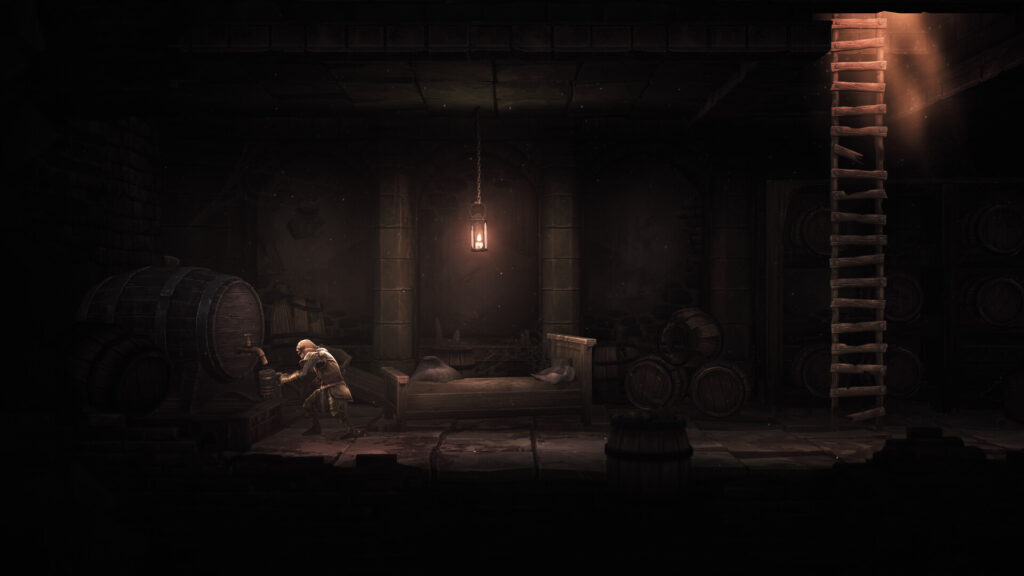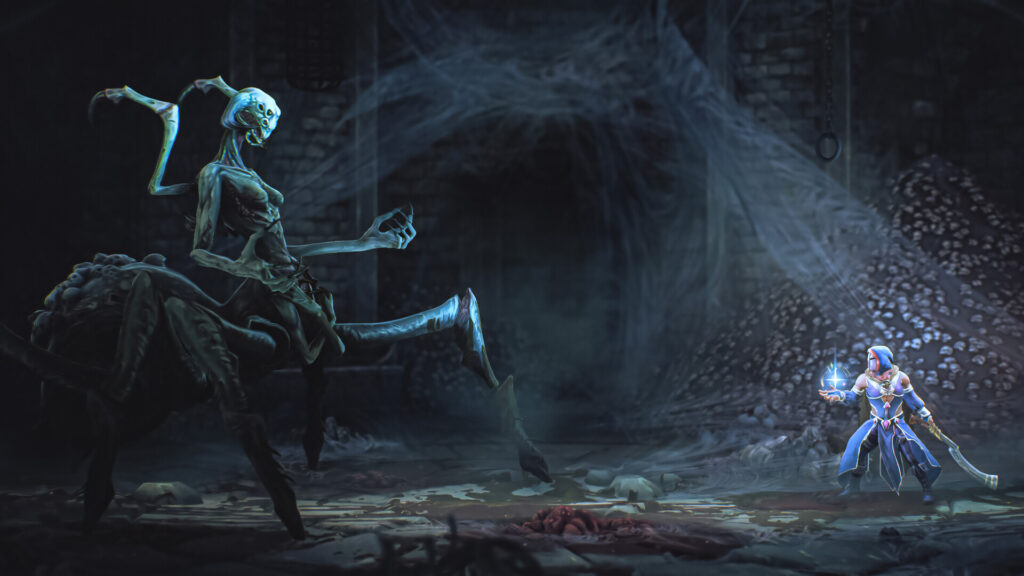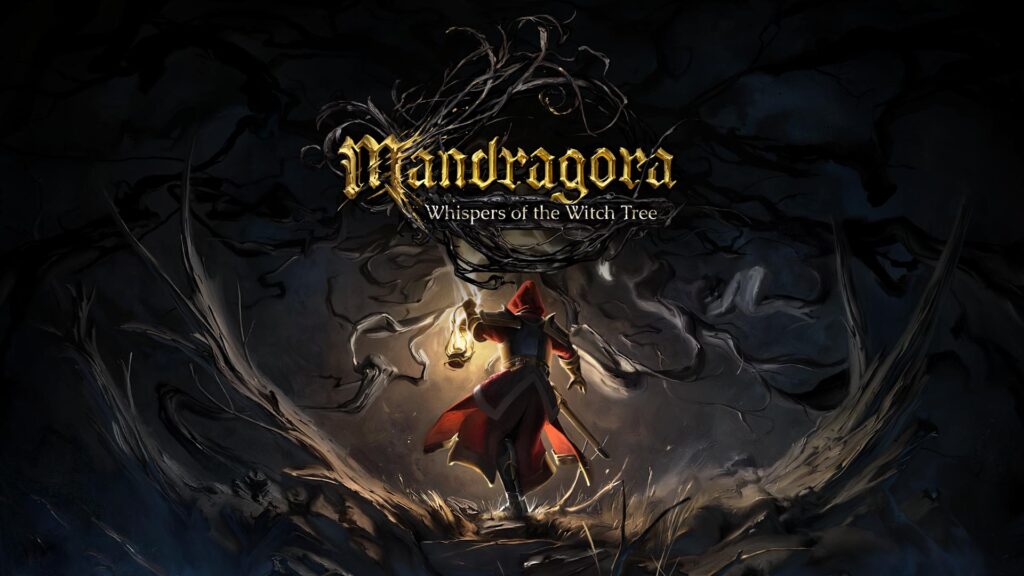A Cursed World Worth Exploring — Even If It Fights You Back
Mandragora: Whispers of the Witch Tree is the kind of game that grabs your attention the moment you step into its bleak, hand-painted world. It’s part Soulslike, part Metroidvania, part old-school action RPG—with deep systems and a moody visual style that begs to be explored. Developed by Primal Game Studio, it aims to fuse challenging combat with rewarding exploration, layered progression, and a haunting narrative set in a dying, magic-ridden realm.
While the final build is still in progress ahead of its 2025 release, the current version offers enough to form a clear impression: this is a game with ambition, beauty, and grit. But it’s also one that stumbles in places where complexity becomes clutter and storytelling leans too hard on genre tropes.
Story: A Promising Setup That Struggles to Deliver
You begin as an inquisitor—part holy soldier, part executioner—tasked with eradicating witches in the name of a corrupt Priest-King. That mission derails immediately when you execute a witch and absorb strange powers yourself. From there, you’re cast into a world unraveling from the inside, confronting factions, monsters, and an encroaching force called “Enthropy.”
The game clearly wants to tell a story about faith, corruption, and inner conflict. And while the setup is strong, the actual execution falters. Dialogue often feels generic, major twists are predictable, and your character’s monologues rarely add weight to the unfolding events. The real storytelling magic lies not in the main narrative but in ambient worldbuilding—through worried villagers, deranged hoarders, and the grim lore tucked into corners.

Combat: Solid, Strategic, and Customizable
Combat in Mandragora is deliberate, challenging, and packed with potential for personalization. You pick from six unique classes—like the Flame Weaver, Nightshade, or the classic sword-and-board tank—and can eventually multiclass via relics.
Controls are responsive, with dodge rolls, light and heavy attacks, and class-based skills mapped cleanly. The combat loop demands precision: mistimed dodges are punished, stamina must be managed, and enemies hit hard. It’s more forgiving than Dark Souls but more tactical than your average Metroidvania.
Enemy variety early on is mixed—rats and skeletons return a bit too often—but boss fights deliver some standout moments, even if they occasionally get recycled. Combat modifiers (like reduced mana costs or bonus adrenaline gain) allow meaningful tuning of your playstyle.
The downside? A bloated skill tree. Many upgrades are minor (+2% here, +3% there), which dilutes the excitement of leveling up. Major skills are impactful, but they’re buried beneath too many filler nodes.
Exploration: The Game’s Strongest Feature
This is where Mandragora shines. The game world is sprawling, interconnected, and absolutely dripping with atmosphere. From ruined cities to monster-infested sewers and eerie swamps, every zone feels handcrafted with care—and danger.
The 2.5D platforming borrows Metroidvania principles: looped level design, shortcut unlocking, and backtracking with new movement abilities. Fast travel exists (thankfully), but doesn’t break the sense of tension that comes with venturing into unknown corners.
Platforming is serviceable, if a bit stiff. Ledge grabs and vertical traversal can feel finicky, and fall damage adds frustration to otherwise solid navigation. Some of the more advanced traversal tools come too late in the game to truly feel impactful, but secret-hunting and exploration rewards mostly compensate.
Locked chests, side quests, bounty boards, and hidden bosses give the world density. This is a game that rewards curiosity—and punishes overconfidence.

Character Building: Flexible, But Without a Safety Net
The character progression system is vast. You’ve got stats to build, skill trees to fill, class relics to acquire, gear to tweak, and enchantments to slot. It’s one of the more flexible build systems in the genre, allowing you to experiment with hybrid builds or specialize deeply into one path.
But here’s the catch: there’s no respec option. Once you commit to a build, you’re stuck with it. This forces you to plan carefully—but punishes experimentation, especially for players new to the genre. It feels like a mismatch for a game that offers such a wide variety of skills and gear combinations.
Crafting, Vendors, and Camp Systems
Crafting in Mandragora is mostly vendor-driven. You bring resources to craftsmen at the central “Witch Tree” hub, leveling them up as you find recipes or invest in upgrades. You can craft gear, food items, and enchantments—some of which are more effective than your base healing items.
It’s a smart system, tied closely to exploration and progression. However, certain vendor upgrades feel grindy and locked behind obscure material drops, which can frustrate less patient players.
Presentation: Striking Visuals, Haunting Audio
Visually, Mandragora is a work of art. Its hand-painted aesthetic evokes games like Hollow Knight and Salt and Sanctuary, but with a painterly richness that feels fresh. Light plays beautifully across ruined courtyards, eerie forests, and crumbling altars. Enemy animations are detailed—even grimly humorous at times.
The voice acting is solid. Protagonist lines are hit-or-miss, but side characters and NPCs are consistently engaging. The standout, though, is the soundtrack—composed by Christos Antoniou of Septicflesh. It’s a brooding, melodic mix of classical and horror, and it elevates nearly every scene.
Performance on PC is excellent. No major bugs, frame drops, or crashes were encountered. On PS5, occasional frame stutters appeared during long sessions, but nothing game-breaking.

⚔️ Where Mandragora Hits Its Stride
+ Exploration That Encourages Risk
Looped environments, hidden paths, and smart shortcuts make exploration meaningful.
+ Combat That Rewards Strategy
Classes feel distinct, and dodging, blocking, and spell use demand timing and skill.
+ Artistic Excellence
The art direction, animations, and music create a cohesive, memorable world.
+ Build Variety
Multiclassing and gear freedom support a wide range of viable playstyles.
+ Strong Performance and Accessibility
Custom difficulty settings and fast travel support broader accessibility.
🧱 Where the Game Stumbles
– Storytelling That Can’t Keep Up
The world is intriguing, but the protagonist and main plot feel shallow.
– Bloated Progression System
Too many skill nodes dilute the feeling of growth and impact.
– Weak Platforming
Janky ledge mechanics and late-game upgrades slow down traversal flow.
– No Respec Hurts Experimentation
Locking players into builds without flexibility feels out of place in such a deep RPG.
– Recycled Bosses and Enemies
Late-game encounter variety drops off, hurting pacing and challenge.
Mandragora: Whispers of the Witch Tree: Mandragora: Whispers of the Witch Tree might not rewrite the Soulslike or Metroidvania playbook, but it brings enough style, systems, and substance to justify a place in any dark fantasy fan’s library. It’s a sprawling, artistically impressive RPG that nails exploration and combat—but stumbles with some frustrating design choices and uneven storytelling. Buy it if you’re a fan of Salt and Sanctuary, Blasphemous, or Hollow Knight, and want something moody, challenging, and visually rich. Just be prepared to dig through some rough edges to find the heart of what makes this game special. – Obsidian


